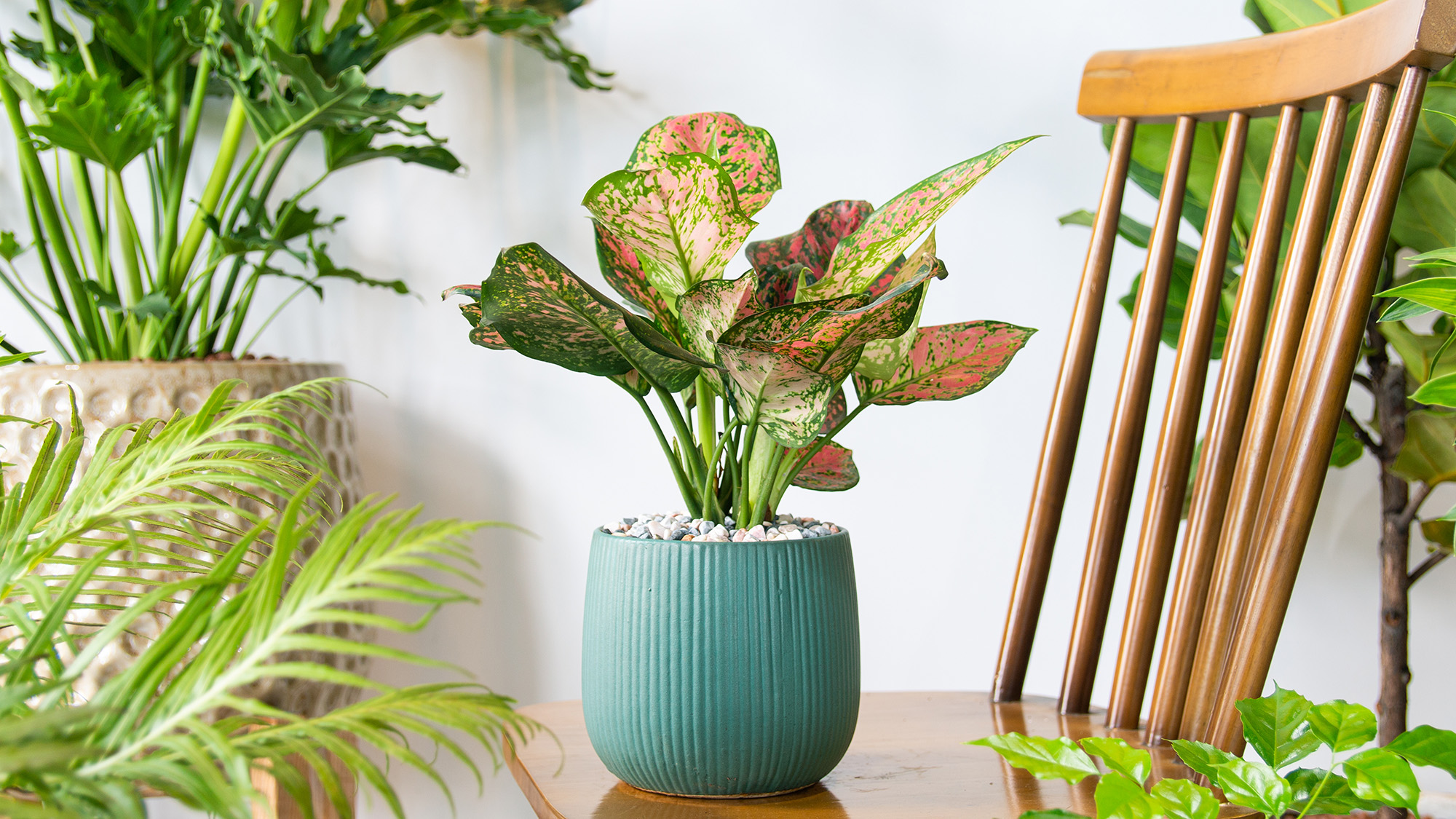
As winter beckons and you hang up your best pruning shears for the season, it gives you the perfect opportunity to go all out and get green-fingered with houseplants since you may not be spending as much time outside. Apart from adding a boost of color to your interior on dull days, houseplants can improve indoor air quality and reduce stress. We think they are exactly what the doctor ordered.
While our first instinct is to think of houseplants as lush and green, plenty of variegated specimens will add an extra splash of color to your interior, and they don't necessarily have to be houseplants with beautiful blooms — there's plenty of specimens with fantastic foliage.
So, with the help of houseplant expert Julia Omelchenko at Plantum, we’re recommending 5 top variegated indoor plants to enjoy this season.
1. Prayer plant
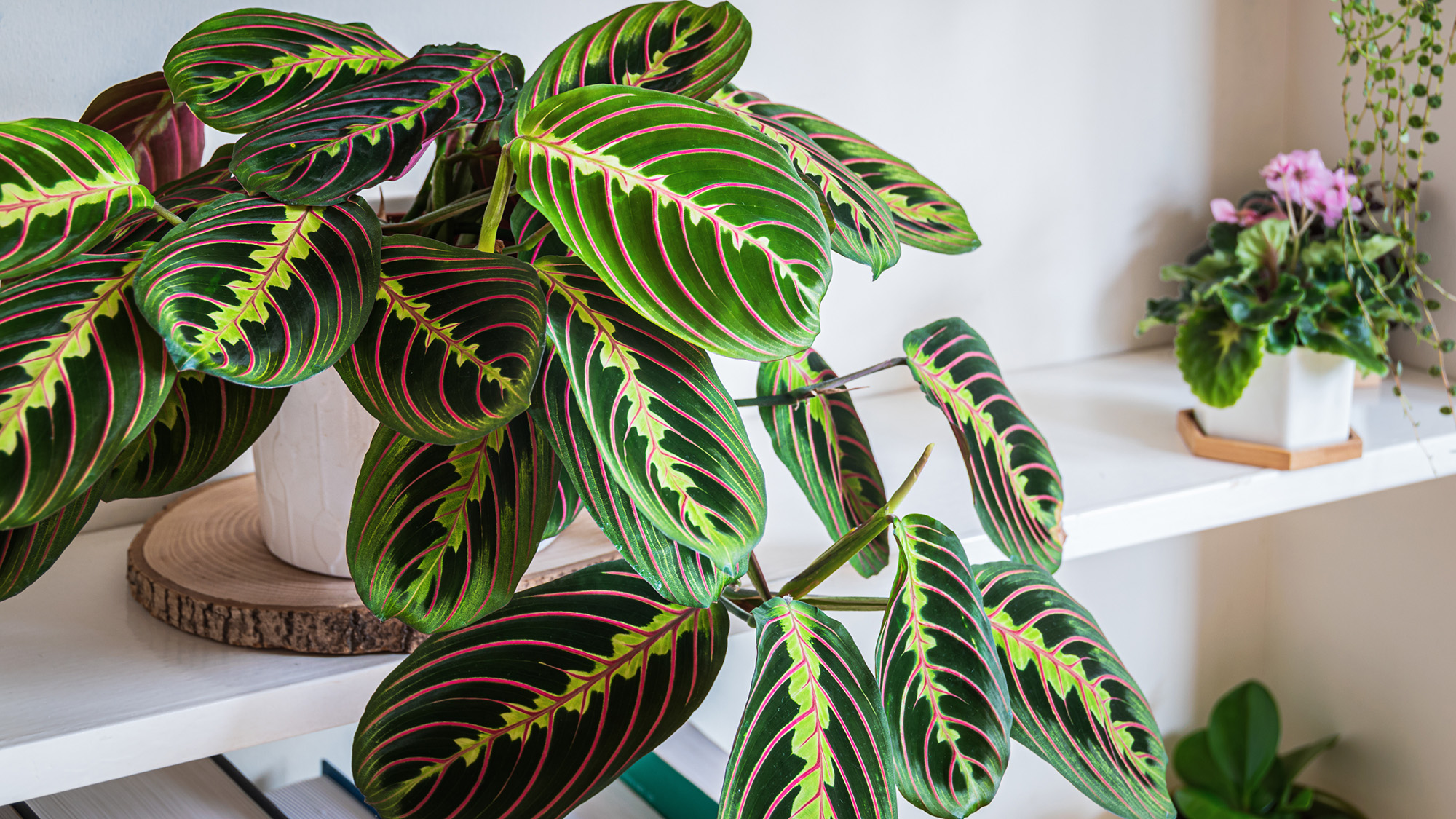
The Prayer plant (Maranta leuconeura) is a stunning example of a houseplant that can enrich your home with color. “Its oval leaves are usually dark green with lighter areas and bright veins that can be either white or pinkish-red,” says Omelchenko.
“One of the most fascinating features of this plant is the movement of its leaves: in the evening, they fold upward like hands in prayer and then open again at dawn — a phenomenon known as nyctinasty.”
By "closing in," the leaves can conserve energy and water until the morning.
However, one of the most beautiful features of this plant, apart from the herringbone pattern on the top side of the leaves, is what you find underneath. “The undersides of the leaves have a purple tint, which creates a noticeable contrast when the leaves move,” Omelchenko explains.
Once the plant is given time to establish itself, it will take on a trailing form, creating a beautiful cascade of leaves.
Plant care
The Prayer plant is native to Brazil’s rainforests and thrives in warm, humid conditions. It also does well positioned in indirect light, as it grows under the shade of tree canopies in nature. This plant is best kept moist rather than wet and should be watered when the top few inches of soil are dry, with Omelchenko suggesting using water slightly above room temperature. It may also require a little less water as it gets cooler and more frequent watering as the temperature rises.
As the plant requires high humidity, Omelchenko advises, “Other than misting, you can raise humidity by placing the pot on a tray filled with wet expanded clay. You can also use a humidifier.”
2. Rattlesnake plant
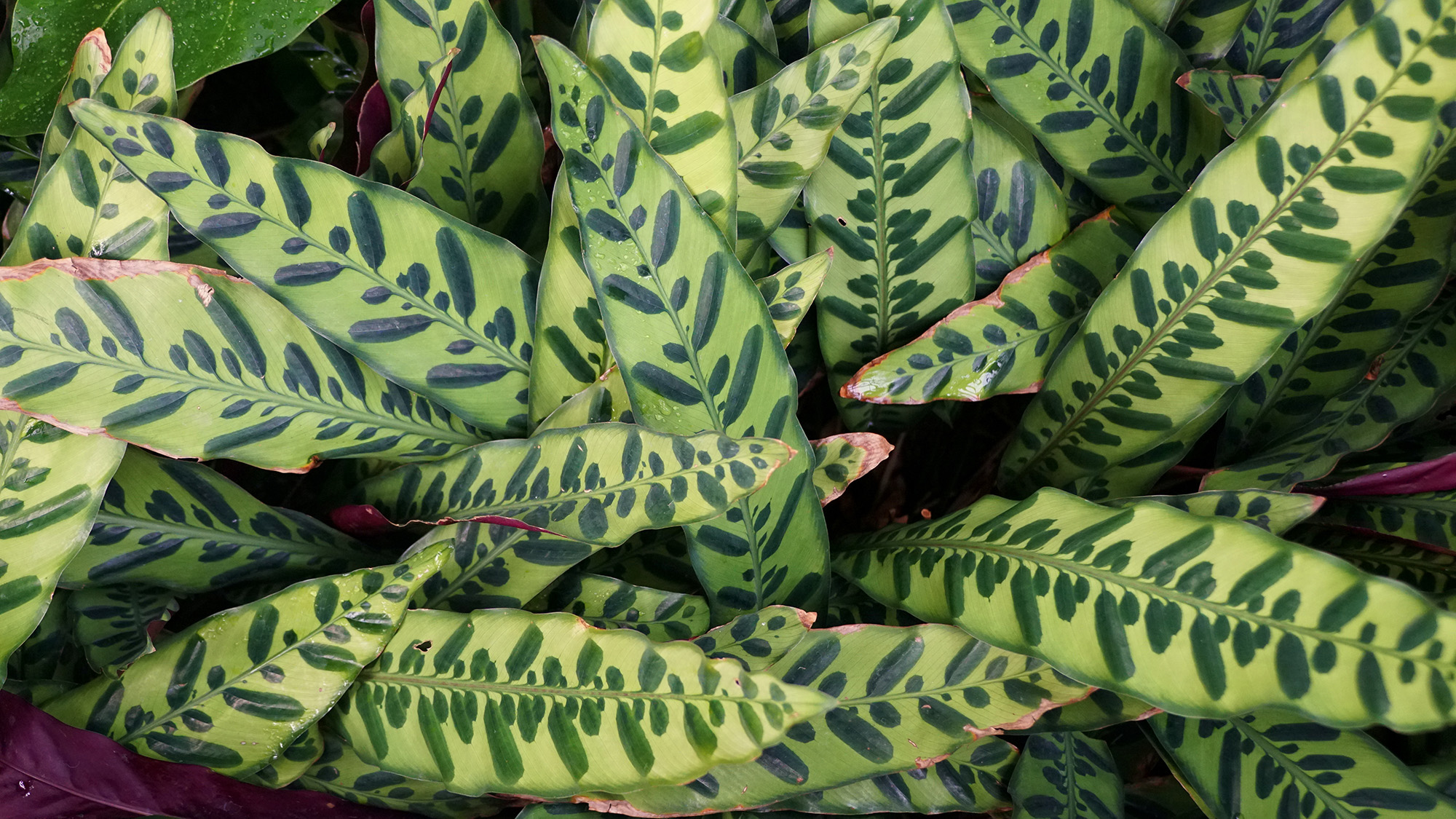
You’ll be perfectly safe with a Rattlesnake plant (Calathea lancifolia), which has striking wavy leaves marked with dark green spots “reminiscent of rattlesnake spots,” Omelchenko says. Its leaves are also bold, lance-shaped, and grow to 30 inches long. And just like the Prayer plant, the burgundy red undersides won’t disappoint. Omelchenko says, “This bold foliage brings an exotic flair to any space, making it a natural focal point in the room.”
It’s similar to the Prayer plant, and it moves its leaves in response to light. It also loves high humidity, “making it a great choice for terrariums or other humid environments,” says Omelchenko.
Plant care
Rattlesnake plants do best in a bright position but away from direct light. They prefer moist, well-draining soil, which should dry out between waterings. Omelchenko suggests checking that the top one inch of soil is dry before watering, then says, “In high humidity, water the plant two to three times a week.”
Your plant will need more frequent watering in the heat and less in the cooler weather. She also recommends using lukewarm water and removing excess water from the plant’s saucer to avoid root rot.
Mist the rattlenake plant every two to three days. These tropical plants thrive in humid conditions and prefer being kept between 68°F and 77°F.
3. Croton
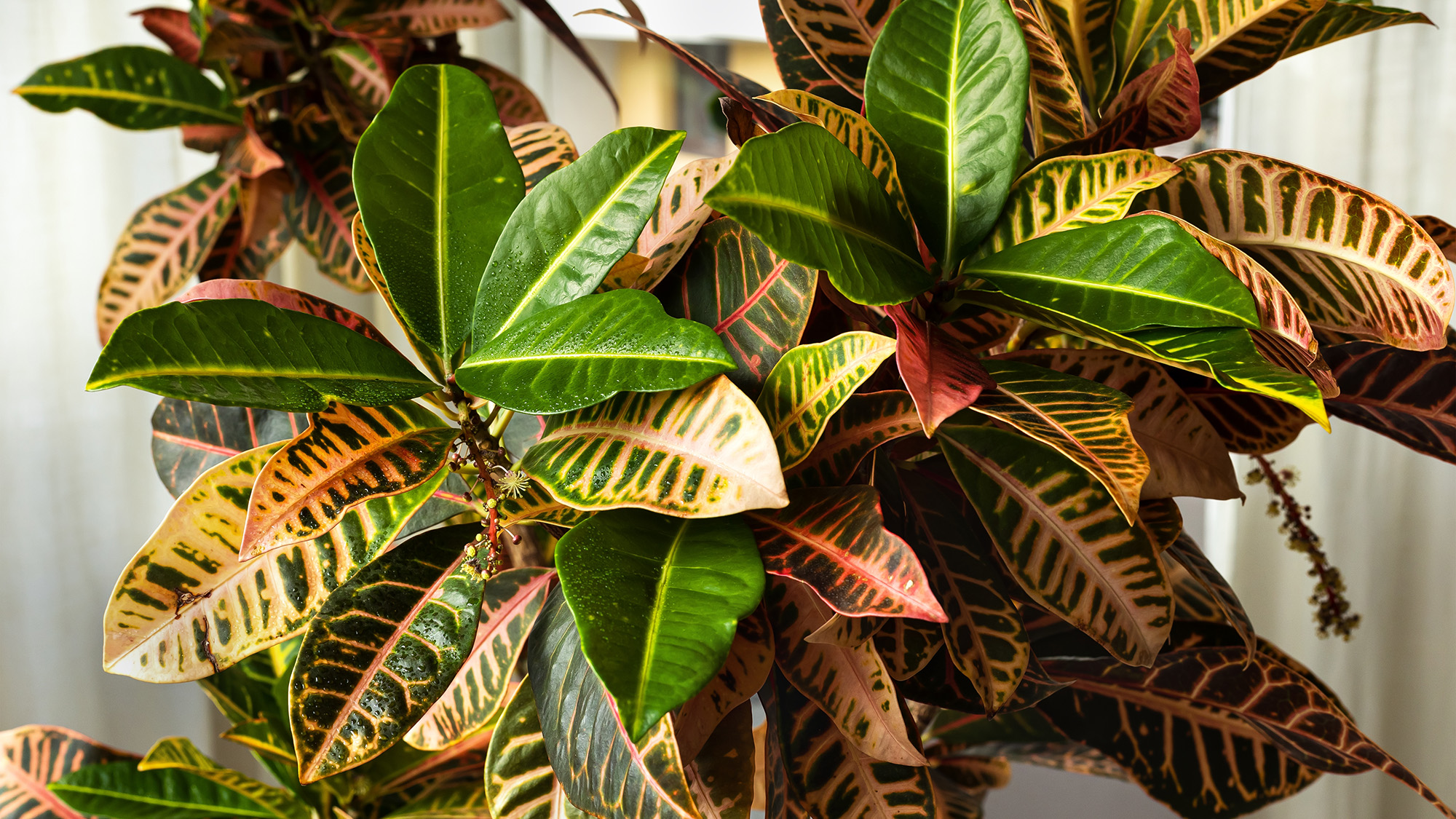
Omelchenko describes Croton as a houseplant with “lush, vibrant foliage and diverse leaf shapes that range from narrow and curled to broad and claw-like.” It all depends on the type.
While Codiaeum variegatum ‘Petra’ has large green leaves with bright patches of red, orange, and yellow, and can reach up to 6 feet when grown indoors, she describes the ‘Mammy’ variety as having spiraled, multicolored leaves that feature shades of yellow, pink, and even purple. And then there’s ‘Gold Star’, with narrow, green leaves sprinkled with bright yellow spots, which will grow to between 1.6–2 feet, making it more ideal for small spaces.
“With so many varieties of Codiaeum plants, you can easily find a unique specimen that adds a special touch to your plant collection and decor,” Omelchenko says.
Although she warns, “It’s essential to handle this plant with care if you have small children or pets, since it’s toxic.”
Plant care
In their natural habitat, Omelchenko explains that these plants grow as shrubs in Southeast Asia and the islands of the western Pacific Ocean. “To keep your plant’s colors rich and vibrant, it’s important to provide it with bright, diffused light, otherwise, the leaves may turn pale. Just be sure to protect the foliage from direct sunlight to prevent burns,” she advises.
You should water your plant once the top 0.4 inches of soil has dried out, every four to five days. Omelchenko recommends watering it two to three times a week using soft, filtered, warm water. Then, once watered, it should be protected from drafts. She adds, “Drastic temperature changes and drafts cause water to cool down quickly, which may lead to the overcooling of the root system.”
4. Belize Rubber Plant
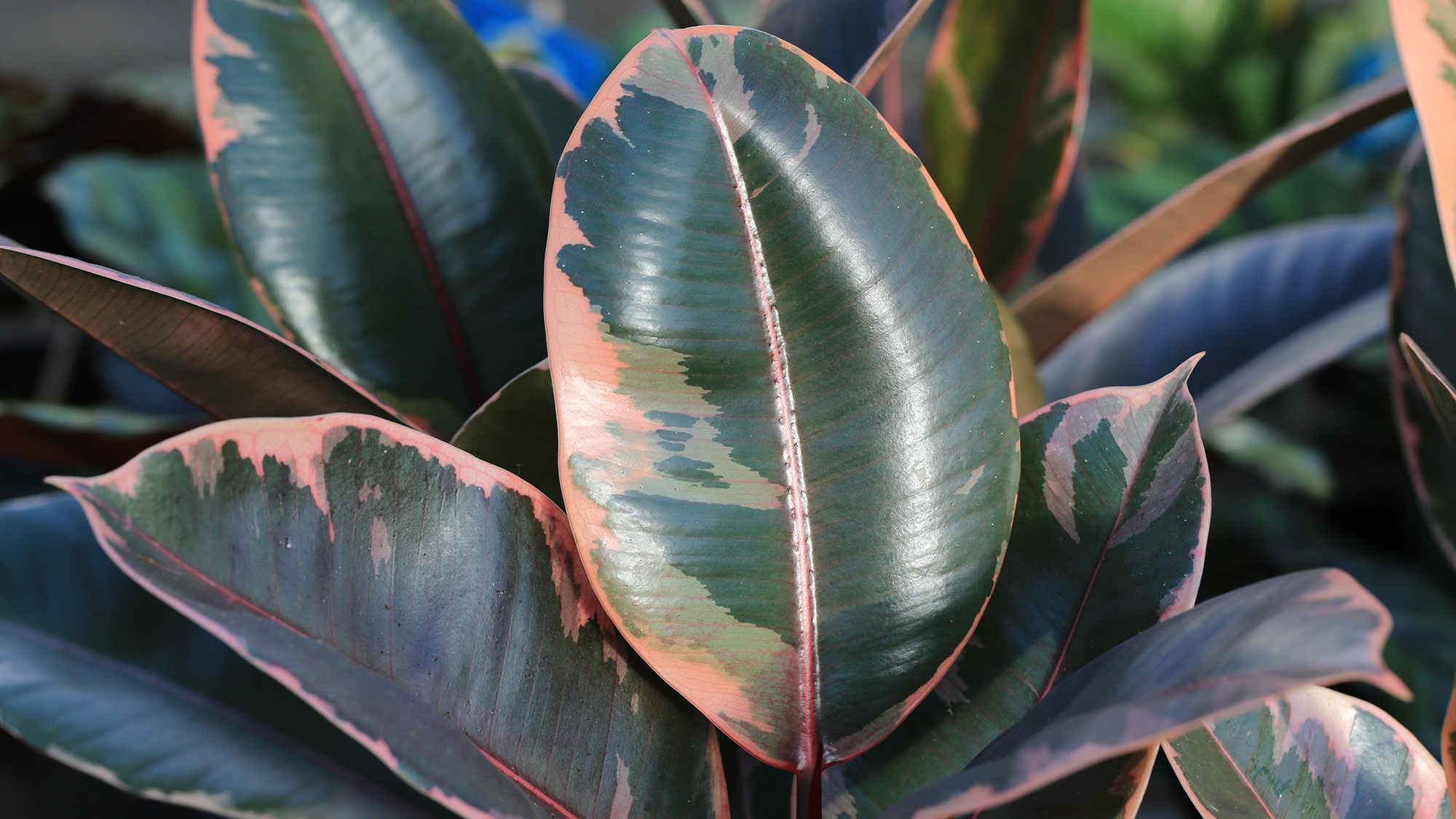
What’s not to love about Ficus elastica 'Belize', a striking variegated variety of the rubber plant, which Omelchenko says will bring a pop of color to your interior.
“It’s known for its glossy, bright-green leaves adorned with creamy white and pinkish hues,” says adds. “The young leaves are especially vibrant, adding an extra touch of elegance.”
This plant is large and hardy; even indoors, it can reach up to 9.8 feet if grown in the right conditions, Omelchenko says.
Plant care
“To thrive, it requires high humidity, regular watering, and filtered light, but it’s forgiving of minor care lapses, making it a great choice for beginner gardeners,” she says. “With minimal effort, you can enjoy a stunning, healthy plant.”
It’s best kept in bright, filtered light, so avoid standing it on a windowsill. And this plant also needs careful watering to avoid both overwatering and underwatering. Then, once watered, it should be protected from drafts like the Croton above.
To keep the leaves looking pristine and glossy, Omelenko suggests giving them a wipe with a wet sponge from time to time.
5. Chinese Evergreen
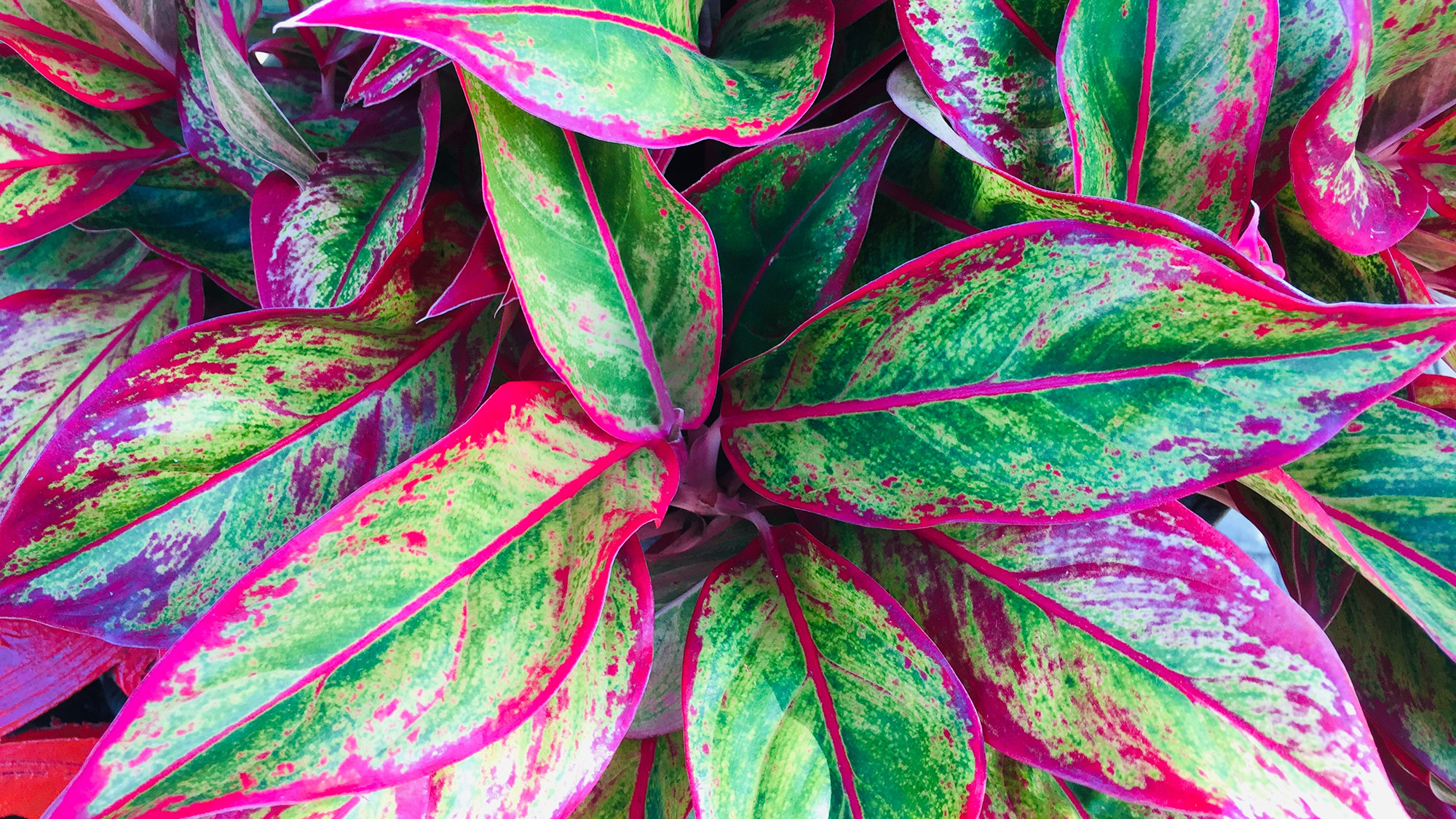
“The Chinese Evergreen, or Aglaonema, is cherished for its large, glossy leaves and unique, decorative patterns,” says Omelenko. “Varieties like ‘Silver Queen’ and ‘White Calcite’ feature white markings and spots that give the dark green leaves a silvery sheen, while the ‘White Joy’ cultivar has nearly all-white leaves, creating a soft, sophisticated look.”
But if tones of white and silver aren’t your thing, you can choose between ‘Red Zircon’ and ‘Pink Dalmatian’. Whatever your preference, Omelenko says, “the broad leaves make even small plants look lush and vibrant, transforming a small room into a mini garden.”
The beauty of Chinese Evergreen is that it’s a low-maintenance houseplant. “It’s perfect for busy people or new plant lovers who want to add a touch of greenery without much concern,” she adds.
Plant care
Omelenko recommends watering the plant once the topsoil has dried out by about 0.5 inches but warns to check the soil regularly in warm weather as it can dry out quickly when it will require watering once every four to five days. Then, as it gets colder, she advises that the plant will need watering once a week. As above, remove excess water from the pot saucer to avoid root rot.
The Chinese Evergreen thrives in high humidity, so she recommends giving it a mist with boiled or filtered water every one to two days.







